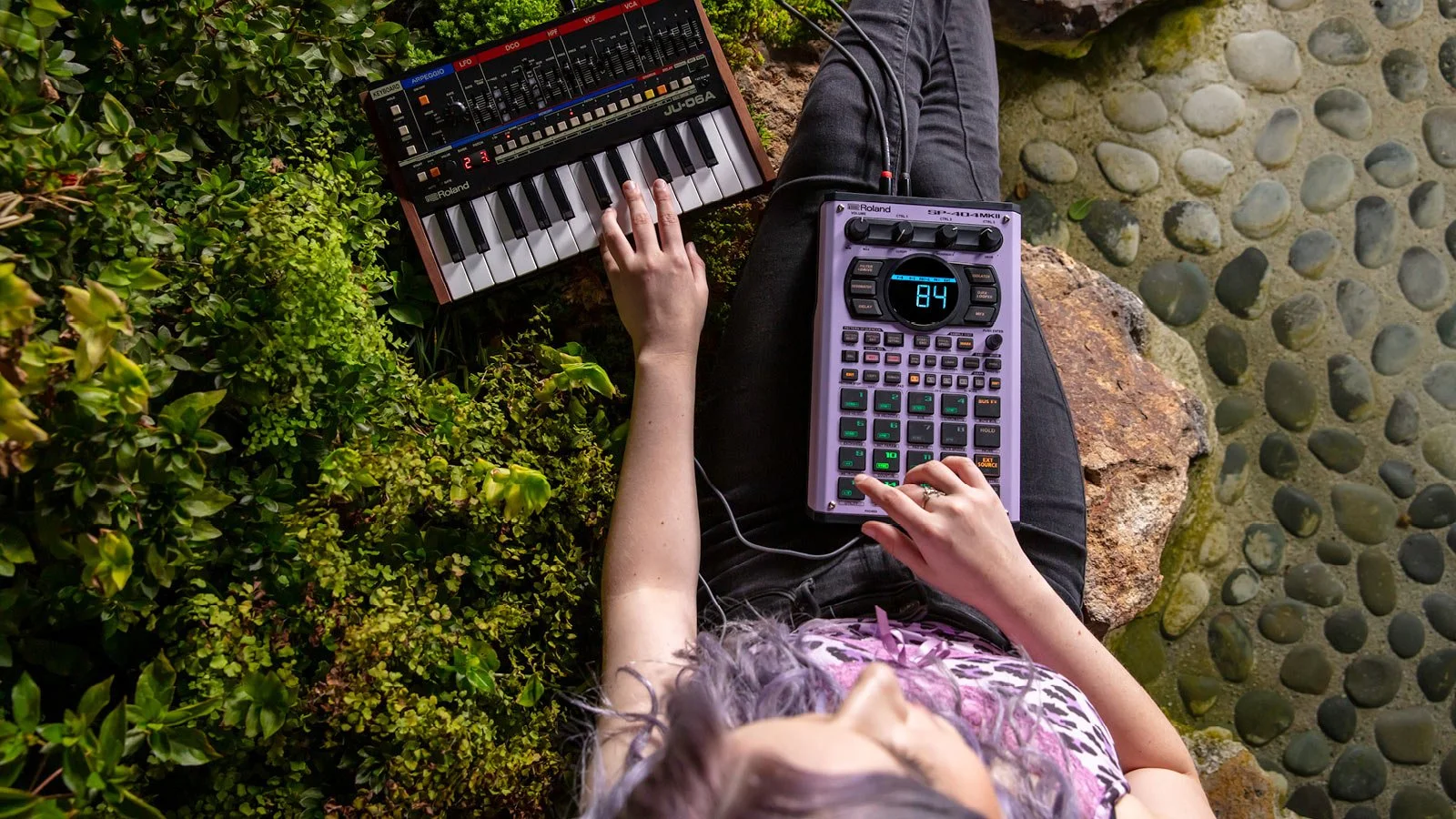SP-404MKII Review: Is This the Ultimate Lofi Sampler?

The Roland SP-404 has been a cult classic for years, earning its place in studios and backpacks alike thanks to its gritty sound, hands-on workflow, and undeniable vibe. From underground beat scenes to festival stages, the 404 series became synonymous with lofi aesthetics, live performance energy, and raw, unfiltered creativity. But as much as people loved the originals, they came with quirks—tiny screens, clunky chopping, and workarounds that sometimes felt like part of the charm, sometimes like a battle. With the SP-404MKII, Roland finally delivered what many longtime users were hoping for: a true upgrade that respects the original spirit, but modernizes the experience. A bigger screen, better pads, faster workflow, cleaner sample import, deeper effects—all while keeping that unmistakable SP vibe alive. In this review, I’ll dig into the sound, workflow, live performance power, and overall design of the MKII, helping you figure out whether this new version still captures the magic—and whether it’s the right sampler for your style.
Disclosure: This post contains affiliate links. If you buy something through these links, I may earn a commission at no extra cost to you. As an Amazon Associate, I earn from qualifying purchases.
The Sound: Classic SP Grit, Now More Polished
One of the biggest questions surrounding the SP-404MKII was whether Roland could modernize the sampler without losing the gritty character that made the original a legend. The good news is: the vibe is still there—but now you have a lot more control over it. Straight out of the box, the MKII sounds clean and detailed, letting you sample with clarity if you want it. But thanks to the built-in effects like Vinyl Sim, DJFX Looper, and resampling tricks, you can quickly rough up your audio, crush fidelity, or warp textures to get back to that beloved lofi, worn-out tape feel.
What stands out is the range: you’re no longer stuck with baked-in grit unless you want it. You can go pristine for polished productions or dirty and degraded for classic SP energy, depending on how you shape your samples and effects. This makes the MKII way more versatile than the older 404s, which had a fixed, somewhat muddy character baked into their sound engines.
Also worth mentioning: the bus effects and input FX aren’t just gimmicks. They’re key to the SP-404 sound, and on the MKII, they feel more responsive, tweakable, and immediate. Whether you’re adding a little saturation or absolutely mangling a loop, the SP-404MKII lets you sculpt your beats' atmosphere right at the source, not just after the fact.
Sampling and Workflow: Huge Upgrade, Still Immediate
The SP-404 series was always about immediacy—grab a sample, flip it fast, stay in the vibe. But on the older models, that often meant working around clunky limitations. With the SP-404MKII, Roland kept the fast, hands-on spirit alive but finally gave beatmakers the tools they’d been asking for: a bigger, higher-resolution screen, proper waveform editing, and much faster sample management.
The new screen alone transforms the experience. Instead of blindly chopping by ear or counting steps, you can visually slice and trim samples with precision. Dragging, zooming, and setting loop points feels quick and natural, letting you focus on creativity instead of second-guessing edits. And if you prefer the old-school "chop and pray" method, you can still work that way—the MKII doesn't force you into a visual workflow if you don’t want it.
Sample import is also miles ahead. Dragging samples over USB-C is easy, and you can finally organize your projects without feeling like you’re hacking around weird file systems. Plus, onboard storage is much bigger, meaning you don’t have to constantly juggle SD cards unless you're working with huge libraries. Roland clearly listened: the SP-404MKII modernizes the essentials without ever slowing down the immediacy that made the SP so beloved in the first place.
Sequencing and Performance: A Live Beast
While a lot of samplers can make beats, few are as naturally suited for live performance as the SP-404MKII. Roland seriously upgraded the pattern sequencer, giving users proper quantization options, non-destructive recording, and easy pattern chaining. Whether you want tight, locked-in beats or looser, more human-feeling grooves, the MKII can handle both without forcing you into one style.
Where the MKII really shines is in its performance tools. Effects like bus FX and input FX aren't just studio flourishes—they're built for live manipulation. You can easily apply real-time filters, vinyl-style warping, or glitch effects across your whole set, and thanks to the responsive pads and intuitive layout, you can remix your beats on the fly without missing a step. The DJ mode even lets you load two sets and transition between them, turning the SP into a mini performance hub.
The magic here is that the SP-404MKII doesn’t just let you recreate your studio beats live—it encourages you to transform them, mangle them, and rebuild them on the spot. It’s a creative playground that feels just as natural for a basement jam as it does for a full live set, and it’s a big part of why the SP series has kept such a loyal following for so long.
Design and Limitations: Built for Creativity, Not Complexity
The SP-404MKII keeps the spirit of the original hardware alive in its rugged, portable design. It’s lightweight enough to throw in a backpack, tough enough to handle gigs or jam sessions, and can even run on battery power if you want to stay mobile. The layout is familiar for SP fans—big pads, simple controls, and a clean, focused front panel that invites you to get hands-on. It's a box that clearly values feel and immediacy over complexity.
That said, the MKII isn’t trying to be everything to everyone. Sample memory is bigger than before, but still not unlimited if you plan on loading up massive multisampled instruments or stems-heavy projects. Editing power has improved dramatically, but compared to full DAW workflows—or even something like an MPC—it’s still streamlined. That’s part of the charm: the SP-404MKII wants you creating beats, not spending hours fine-tuning them.
If you approach it as a creative sketchpad and performance powerhouse, the SP-404MKII absolutely delivers. But if you’re hoping for detailed sample layering, ultra-deep modulation, or a full studio-in-a-box experience, you might find yourself reaching for a second machine to handle the heavier lifting.
Alternatives to the SP-404MKII
Akai MPC One+
If you're looking for a sampler that goes beyond live jamming into full-on track production, the MPC One+ is a strong alternative. It offers powerful sample editing, full MIDI sequencing, synth plugins, and even full song arrangement tools, making it more like a portable DAW than a simple groovebox. That said, it’s a very different vibe from the SP—more about precision and layered production, less about gritty, off-the-cuff beatmaking. If you want full control over every detail of your samples and tracks, the MPC One+ is a better fit; but if you prefer fast, raw creativity, it might feel like overkill.
Elektron Digitakt II
The Elektron Digitakt II is another option for producers who like fast sampling workflows but crave deeper sequencing power. It’s not as “instant” feeling as the SP-404MKII, but it rewards learning its deeper system with the ability to build incredibly detailed, evolving beats. Parameter locks, conditional trigs, and creative sample mangling are at the core of the Digitakt's approach. If you like the idea of sample-based beatmaking but want more structure, more sonic precision, and tighter integration for finished tracks, the Digitakt II offers serious firepower in a portable box—at the cost of a steeper learning curve.
Novation Circuit Rhythm
The Novation Circuit Rhythm is a great middle ground if you want a portable sampler focused on live performance but don't necessarily need the classic SP "grit." It offers sample slicing, real-time effects, an intuitive grid layout, and fast pattern building—all in a battery-powered device that’s easy to carry and jam with anywhere. The sound is cleaner and more polished out of the box compared to the SP-404MKII, but the Circuit Rhythm shines if you want smooth workflow, quick sample flipping, and live-friendly FX without the rough edges. It’s a different flavor, but still a fun and powerful creative tool.
Final Thoughts: Is the SP-404MKII Right for You?
If you’re looking for a sampler that’s built around immediacy, creativity, and live performance, the SP-404MKII is still one of the best options out there. Roland managed to modernize the workflow in all the right places—giving you a better screen, faster sampling, and smarter sequencing—without losing the gritty, hands-on vibe that made the 404 series legendary. Whether you're chopping dusty loops, mangling beats live, or building full tracks from scratch, the MKII keeps the process fun and intuitive.
That said, it’s not built to replace a full DAW or a deep sampler like the MPC or Digitakt. If you need massive project organization, detailed sample mapping, or ultra-precise editing, you might find the SP-404MKII a little too streamlined. But if you want a machine that helps you capture ideas fast, jam them into full tracks, and perform with personality, the MKII nails it—and proves why the SP legacy is still alive and kicking today.
Disclosure: This post contains affiliate links. If you buy something through these links, I may earn a commission at no extra cost to you. As an Amazon Associate, I earn from qualifying purchases.

